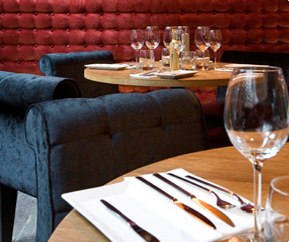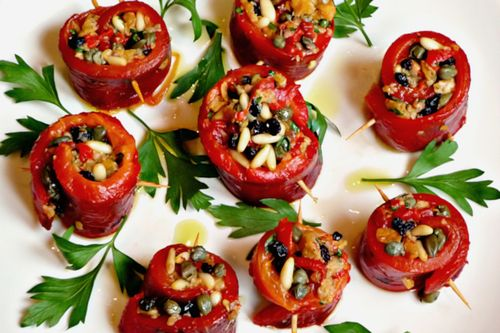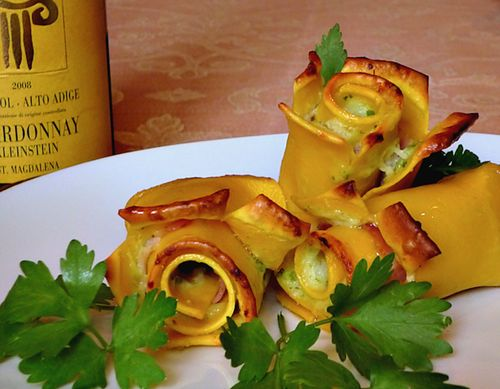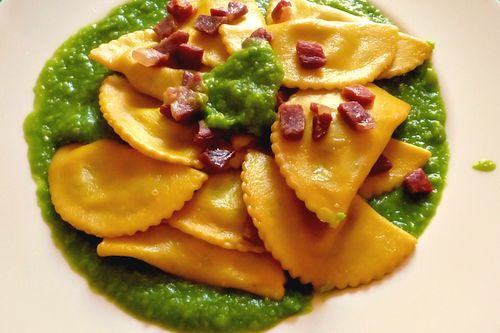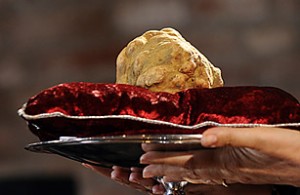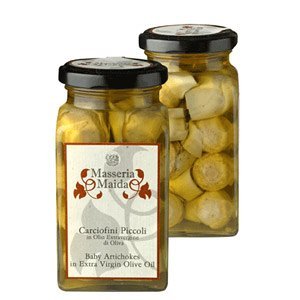Every Thursday afternoon, fresh buffalo mozzarella and ricotta arrive at our door, direct from Campania. The cheese is made on Tuesday afternoon from water buffalo that are milked that morning. It’s a pleasure many of our customers look forward to each week. What’s the big deal? Let me explain:
Mozzarella di bufala is a very fresh (unripened) pulled cheese made from the full-fat milk of water buffalo. Mozzarella has an interesting history, and like many Italian foods, is somewhat misunderstood.
Cheese made from cow’s milk is technically fior di latte [milk flower], but is many times also referred to as mozzarella. The taste is very different from buffalo mozzarella, more delicate and less rich, but its shelf life is much longer.
We consider genuine mozzarella di bufala a luxury product, but its roots stem from once underprivileged and rural southern Italy, where water buffalo lived in the unhealthy swampy regions near rivers and lagoons, and the countrymen who herded them suffered from malaria.
Historians trace Italy’s water buffalo back to twelfth century Campania, when monks at the San Lorenzo Monastery in Capua offered a mozza o provatura and a piece of bread to pilgrims visiting the church. The term mozzarella first appeared in the 16th century in a cookbook written by Vatican Chef Bartolomeo Scappi titled Opera dell’arte del cucinare.
There are many theories on the origins of water buffalo in Italy, but according to the Mozzarella di Bufala Campana DOP, the mostly likely is that during the tenth century, the Norman kings brought them into southern Italy from Sicily, where they had been introduced by the Arabs. Others believe the buffalo are indigenous to Italy, based on fossils found in the countryside surrounding Rome, as well as from results of recent studies that demonstrate that Italian buffalo have a different phylogeny than Indian buffalo.
Today, Italian water buffalo are raised in fenced-off fields and either graze or are fed locally produced hay or feed. The animals enjoy pools and showers to keep them cool (they have no sweat glands) and live an average of 15 to 20 years. Females give birth to one calf each year and give about two gallons of milk a day.
Although the cheese is produced in several areas from Abruzzo to Lazio to Campania, the best is arguably from around Naples, in the district between Caserta and Salerno. There are many dairies scattered about in this area, both small and large, where you can watch the mozzarella being made; a very fast process.
The milk is brought in, curdled, then drained to eliminate the whey. The curd is then cut into small pieces and ground up in a mill. The crumbly curd is placed into a mold and immersed in hot water, where it is stirred until it becomes rubbery. It is then kneaded, much like bread dough, until a smooth, shiny paste is reached, at which time the cheese maker pulls out and lops off a piece of cheese (mozzare in Italian means to lop off).
These individual balls are placed in cold water, and then are soaked in brine. Mozzarella prepared in the evening is ready the next morning.
But you don’t have to go to Campania to watch mozzarella being made. They make the cow’s milk variety at Joe’s Dairy, in New York’s SoHo; the process was recently documented by Amy Bandolik on her blog Delicious Thursdays.
Buffalo milk is not for drinking and is used exclusively for making mozzarella. It is much more concentrated than cow’s milk and would probably prove very difficult to digest in liquid form. Rich in calcium, high in protein and lactic flora substances, and with a high vitamin content, mozzarella di bufala is highly nutritional. There are only 270 calories in 100 grams of the cheese.
Italians will tell you that mozzarella di bufala should be eaten within a few days of its production – but better yet, a few hours! Fresh mozzarella should be elastic, the surface tight, smooth, and humid. There should be no yellowish marks or spots. When you press it with a finger, the texture shouldn’t be soft or rubbery. Inside it should have a grainy surface and composed of many layers, like an onion, especially near the surface.
Pearls of milky whey should seep out when you cut into the cheese and you will notice liquid separating from the solid, as if it had been soaked in milk. Get to know your cheese vendor and ask when the mozzarella is delivered. That’s the day you should buy it!
Fresh mozzarella di bufala, in our view, should be enjoyed by itself; we simply pour on some delicate extra virgin olive oil and add some coarse salt and a little black pepper. For our Insalata Caprese, we use fior di latte, which we believe provides a better balance to fresh tomato and basil. If you use fresh mozzarella on pizza, it’s best to drain it for several hours in a colander in the refrigerator to remove some of the moisture, otherwise you will get a soggy crust.
One of the byproducts of making mozzarella is ricotta, which means “recooked”. Ricotta is actually not a cheese at all, but is made by heating the whey from another cooked cheese, in this case, buffalo mozzarella. It is slightly grainy, white, moist, and has a slightly sweet flavor. And like mozzarella, we do very little to this luxurious ingredient, other than form into small bite-sized balls, or bocconcini, give them a quick egg wash, then flash fry. The result in the palate is cloud-like heaven.
Our regulars know that our mozzarella di bufala arrives on Thursday directly from Campania, and we only bring enough to last through the weekend. Sometimes we sell out in one night. It’s a bit of an extravagance, but once you’ve tasted freshly-made mozzarella di bufala, Thursdays will always mean a trip to Bellavitae.
.
